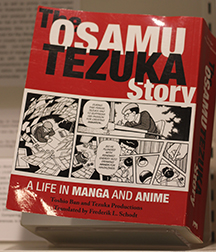Comics in Circuit Interview: Jean-Claude Jouret
In September 2018, our first interview subject, Haniyeh Barahouie, interviewed Jean-Claude Jouret, a specialist in the Belgian cartoonist Hergé and his famous creation, Tintin. The first general secretary of the Hergé Foundation and the first CEO of Tintin Licensing, Jouret holds a Masters in Business Management and a Ph.D. in Information and Communication from the Catholic University of Louvain. His first book, Tintin et le Merchandising: une gestion stratégique des droits dérivés (Louvain-la-Neuve: Academia) was published in 1991. He is the author of two other books: Hergé et la publicité (Neufchatel: Weyrich Edition, 2016) and Hergé: de l’abbé Wallez à Steven Spielberg (Neufchatel: Weyrich Edition, 2017). Jouret currently serves as a professor of marketing and communication in various institutions in Belgium and works as a business consultant.
N.B. This interview was conducted in French and has been translated by Haniyeh Barahouie.
How did you come across the field of comics and especially Tintin?
Since my childhood, the adventures of Tintin have fascinated me! I did not read a lot of comics, but the world of the reporter created by Hergé immediately transported me. The graphic style (the clear line) and the link between fiction and reality that made The Adventures of Tintin plausible have a lot to do with it. I must admit that in Belgium, Tintin is a real cultural reference!
Where did you get the idea of publishing Tintin et la publicité?
The project of this book has two origins … First of all, my passion for the use of Hergé’s heroes in merchandising and then Hergé’s very close links with advertising. From there, was born the project of a rigorous study divided into 4 major sections:
– Hergé and advertising
– Advertising for Hergé’s creations
– Advertising in Hergé’s creations
– Hergé’s creations in advertising
Until now, the very strong link that unites Hergé and his creation of advertising has never been analyzed so rigorously and comprehensively.
At the launch of this book, a Belgian TV journalist stated that the content of my study was so obvious that she did not understand why such a book had not been written before … I took this point as a nice compliment!
What is the main idea of your recent book Hergé: de l’abbé Wallez à Steven Spielberg?
My latest work is an extension of Tintin et la publicité. It analyzes several issues related to the cinematographic adaptations of European comics in general and the cinematographic adaptations of the Adventures of Tintin in particular. The legal (copyright), economic (merchandising) and narrative coherence (trans-writing) aspects of Tintin’s film adaptations constitute challenges for both the rights holders and the director. Until now, it must be admitted that despite the talent and the means implemented, the results obtained do not seem to offer innovative cinematographic perspectives on the heroes of Hergé …
 Given various types of advertising in the world of marketing, do you see a future for comics in this area?
Given various types of advertising in the world of marketing, do you see a future for comics in this area?
For me, the answer is positive. Even if the means and the techniques have evolved a lot, the comic strip remains an ideal medium for advertising.
I believe that technical developments could lead to potential narrative extensions of comics. A bit like a “spin-off.” In the case of Hergé, these new advertising techniques would be great ways to maintain the presence of the characters without betraying the will of the father of Tintin, who did not want these creations to live new adventures under the pencil of another author.
Are there other characters from the comics that interest you?
Overall, I have a preference for the graphic style of the “clear line” and realistic stories. The adventures of Blake and Mortimer (Edgar P. Jacobs) “stick” perfectly to these conditions. However, I am open to other approaches – the “Charleroi School”* and the “Tokyo School”** belong to other genres, but reading them gives me a lot of joy! If drawing is the first contact with a comic strip, we must not forget that the quality of the storyline is decisive. This is the strength of the adventures of Tintin: the drawing and the script are in perfect symbiosis because they come from the same creator: Hergé!
* The “Charleroi” style of drawing is associated with the French bande-dessinée magazine Spirou and is named after the Belgian town where the magazine was founded.
** The “Tokyo” style of drawing refers to Japansese manga, for example, the works of Osamu Tezuka.
Image (from the RBS exhibition Comics in Circuit): Toshio Ban and Tezuka Productions. The Osamu Tezuka Story: A Life in Manga and Anime. Berkeley, CA: Stone Bridge Press, 2016.
